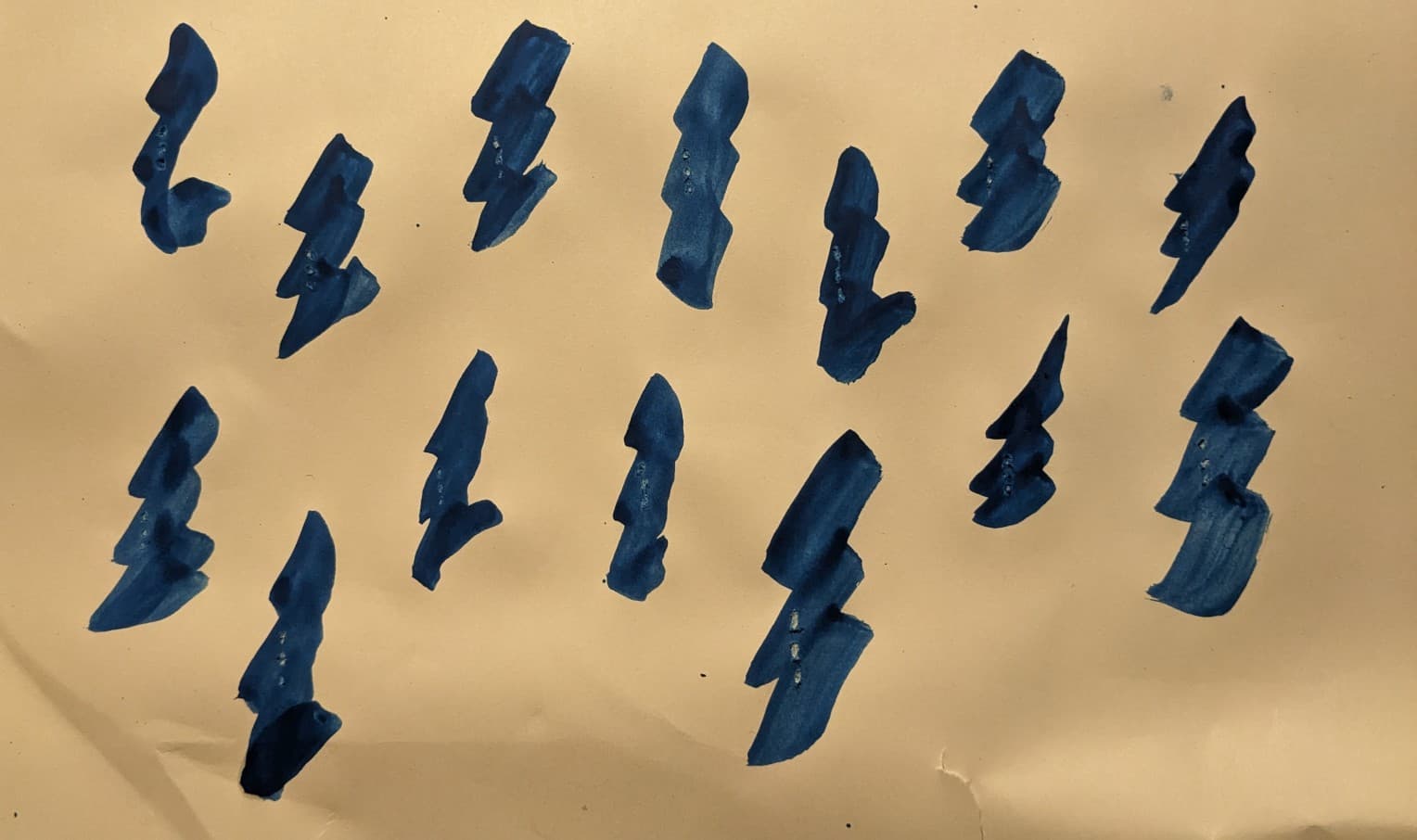I painted men of the past (they are all looking to the left) and cried together with them some of the tears they never cried. It was potent and sweet. And I got a taste of the immensity of grief that lives in me that is from before my own lifetime. Just from looking at the image I start crying again.

I became more aware over the last months of my individual and our collective need to mourn (i.e. to process and release grief that we hold within us). And I’ve been experimenting with different ways to access that grief — that I now know — is within me. I discovered that painting watercolors help me access that grief, in particular the blue colors. And then, today, I connected with a particular context through the painting that opened up another layer of grief. I’m very low-skilled when it comes to painting techniques, so I’m leaning on simple moves mostly.
What you see above started as a coincidence. I was just experimenting with strokes and this particular blue color, and then, when I set three simple diagonal strokes on top of each other, each drawn from to the top right to the bottom left, it reminded me of those megalithic Moai sculptures on Easter Island looked at from the side. And those I associate with ancestors, primarily men. And while drawing them, I felt like I was connecting with men of my cultural and biological lineage. I started to feel grief that wasn’t my own grief, at least not grief from my own lifetime. I could feel some of the grief that they must have accumulated within them from all the violence they contributed to, witnessed or just didn’t know how to stop it. This huge amount of grief, which most of them likely never processed and released before they died because they did not live in a culture that supported them to process and release this grief. That culture encouraged mostly numbing and escaping (and still does so a lot today!).
And while I painted more of them my own tears started flowing. I found access to some of that deeper grief about the horrors that I was taught in schools about what men of my cultural and biological lineage participated in and contributed to. And then at some point it felt like I was crying together with them those tears, and I started adding little tears to their faces by scratching away some of that paint.
And now, I invite you to take a look at the image, again. And see if you can sense some of the pain that might live in men from your own past, or even present, and imagine them crying. Crying about the harms they contributed to and the harms that were inflicted on them — including being forced in various ways to harm others.